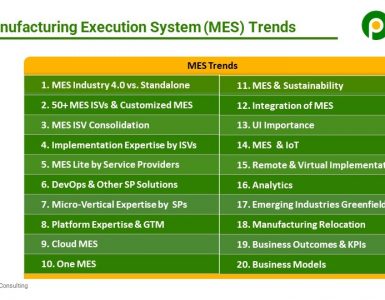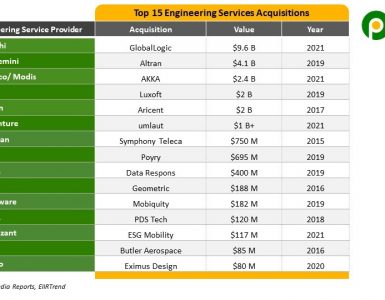In the last few quarters, an interesting trend has been observed in the results of IT Service Providers. There is generally good growth in order bookings measured in Total Contract Value (TCV) and as reported by IT service providers and explained by IT service provider senior leadership, but the revenue growth is not that high. High revenue growth corresponding to high TCV value should come with a lag, but that is not visible. This is puzzling to analysts and the media community.
Is there a decoupling between high TCV value and revenue growth in the short term?
There are not enough financial disclosures by service providers to analyze this in detail and know for sure. For now, only looking at TCV and revenue growth numbers, it looks like some decoupling is there. These could be some of the reasons.

- Client Leakage: While service providers are adding new clients, they are also losing some of their existing clients for various reasons. Either work is finished, or it is not renewed, or it has gone to other service providers in the vendor consolidation, or it is taken in-house by the client, or in extreme cases, even client bankruptcies.
- Projects Ramp Down: In some cases, while the client is intact but there is some impact on projects due to the client’s internal and external circumstances. In the last quarter Q4 FY23, many service providers are mentioning about project pauses and ramp downs, due to which their quarterly numbers are below expectations.
- TCV vs. ACV: Another point is the difference between Total Contract Value (TCV) vs. Annual Contract Value (ACV). Generally, service providers declare their TCVs, but for the same TCV deal, ACV can be different depending upon the deal duration. A deal with TCV of $100 Million can have an ACV of $25 Million if the deal is of a four-year duration and an ACV of $10 Million if the deal is of a ten-year duration. More the ACV, the more near-term positive impact on the YoY growth rate.
- Deal Slow Ramp Up: Sometimes, service providers face challenges in new deal ramp-up for either service provider-specific challenges or client-specific challenges. Service provider-specific challenges could be attrition, non-availability of manpower, and visa issues. This happened during a great resignation period when many service providers said they could have grown faster if their attrition was in control. Similarly, during travel restrictions, there was a slowdown in deal ramp up. Client-specific challenges could be changes in their operating environment, strategy, and priorities in the short term.
- Automation: In many cases, service providers improve client operations with automation and other levers, and consequently, client billing is lowered. It is not a project ramp down due to any negative reasons but performance improvement for positive reasons. This could lower the revenue growth, though.
Bottom Line: This decoupling is getting more noticeable in this macro environment where there are client exits, ramp down, slow Ramp up, larger duration deals, etc. It will help if IT service providers start disclosing more information about their orders, projects, and clients to their stakeholders, shareholders, and the external world. The information helps everyone and sets the right expectations.





 Pareekh Jain
Founder of Pareekh Consulting & EIIRTrends
Pareekh Jain
Founder of Pareekh Consulting & EIIRTrends
Add comment